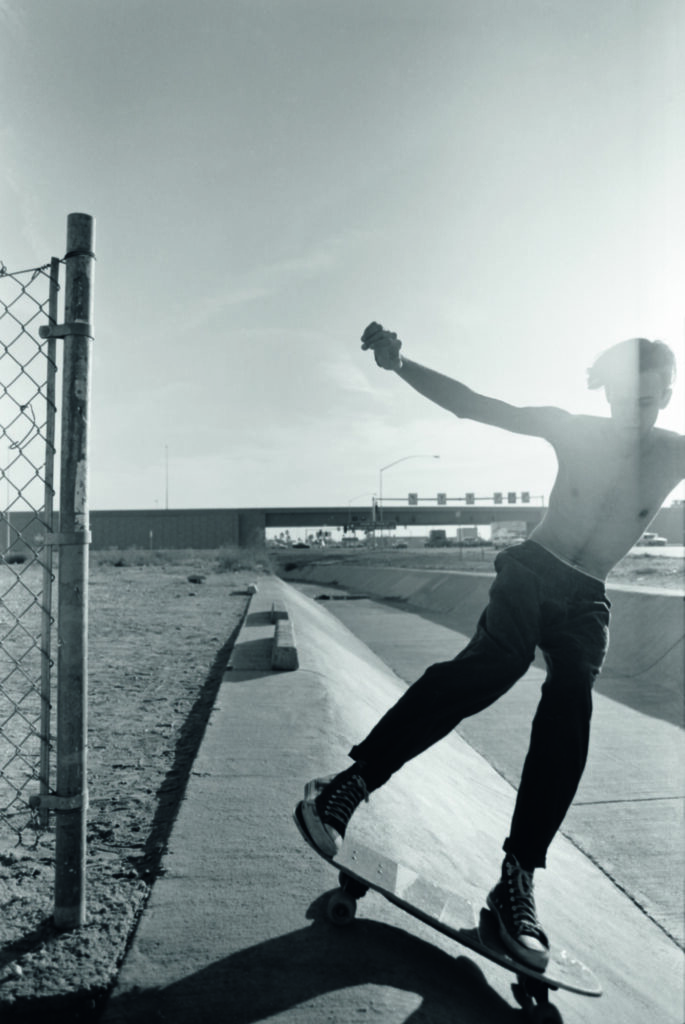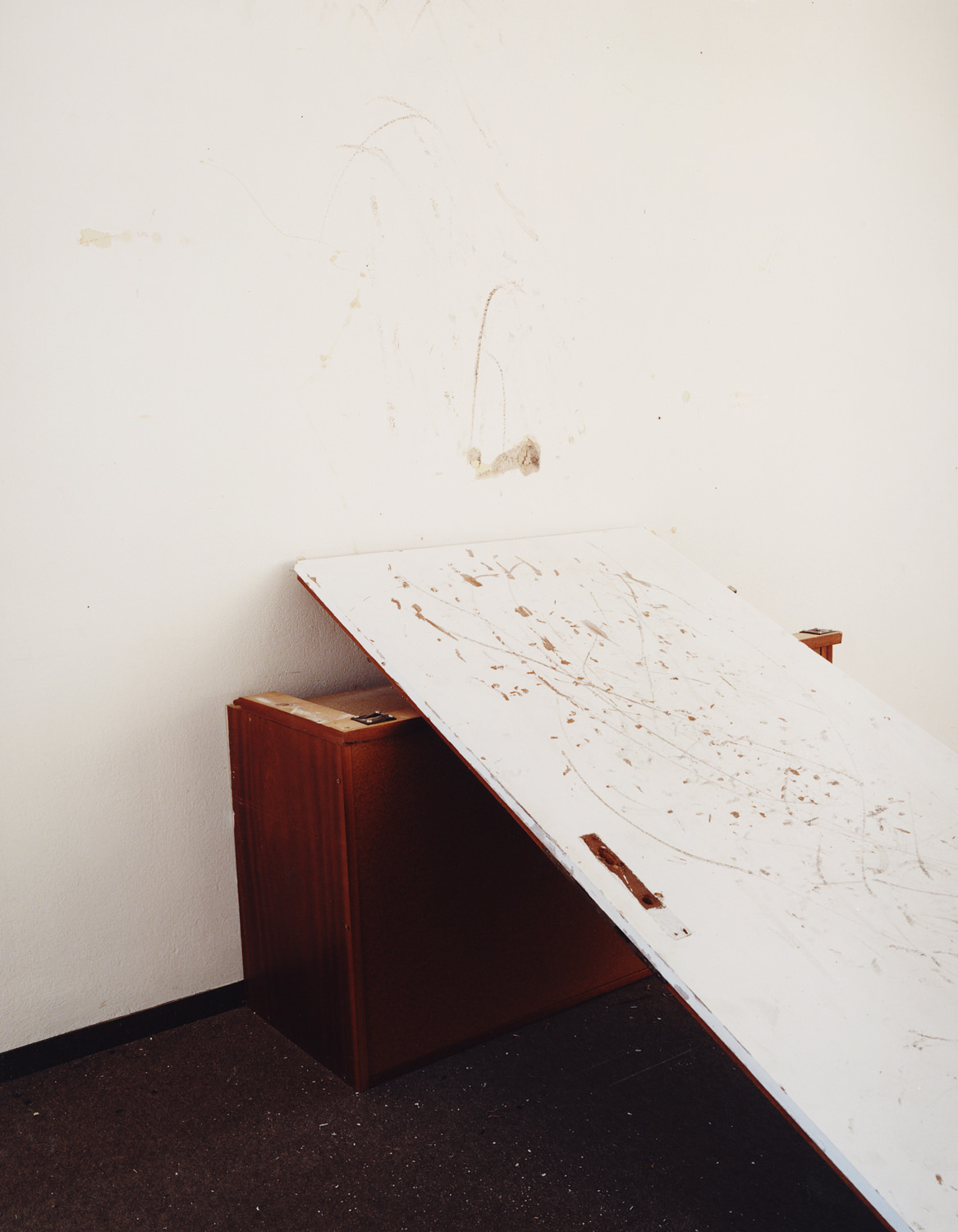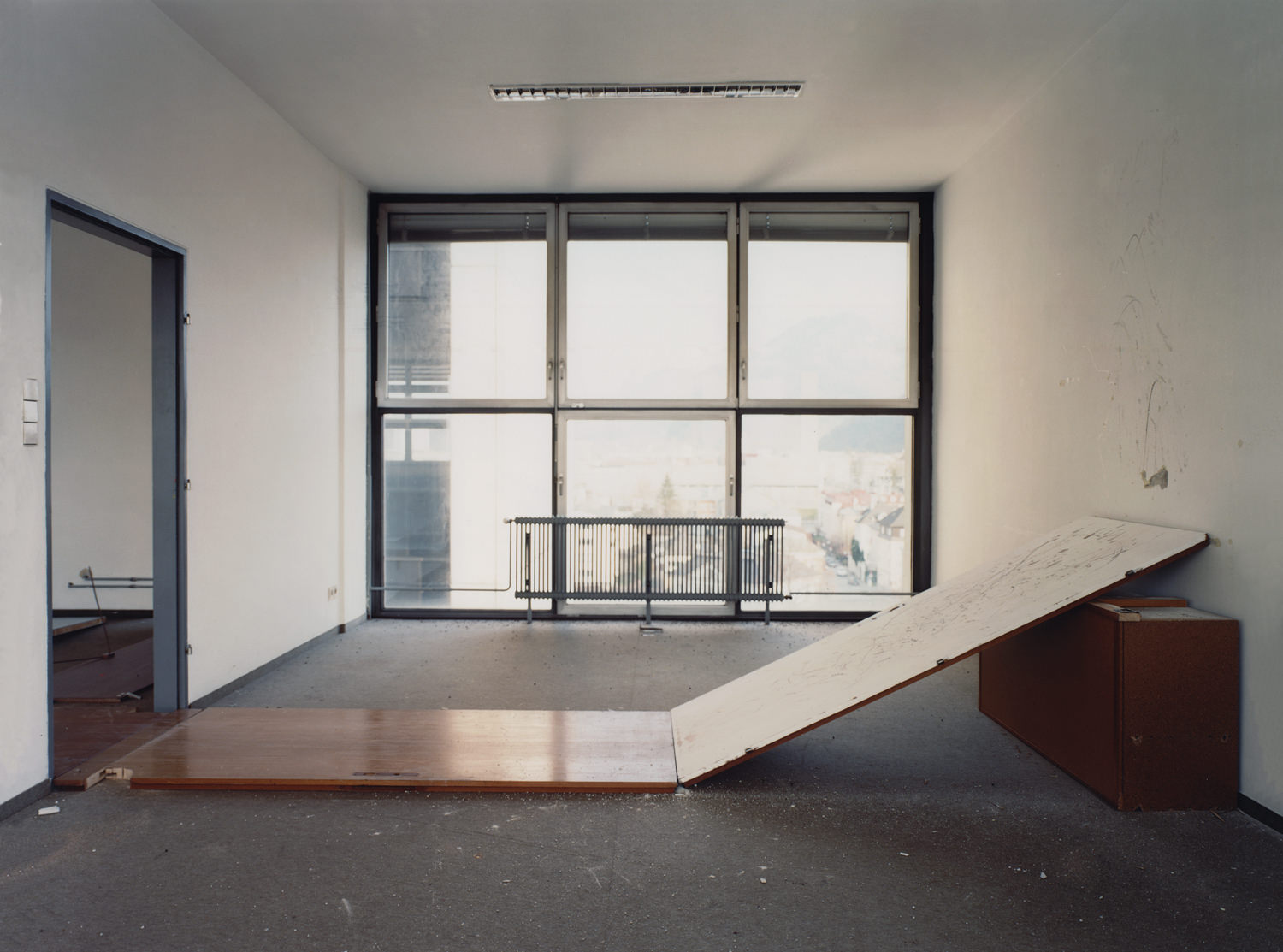
720 (two times around)
eine hommage an mike mcgill und robert adams
Es ist 20 Jahre her, dass ich einen Übergang aus einer Sperrholzplatte herausgeschnitten und an eine Wand gelehnt habe, aber zum Glück schafft es die Fotografie immer noch, mein Herz von Zeit zu Zeit höher schlagen zu lassen. Ich habe diese Bilder mit ein wenig Neid gemacht, neidisch auf die Kinder, die die Relikte einer Firmenbrache genommen und mit ein paar Elektrowerkzeugen und etwas Einfallsreichtum ihre eigene Welt geschaffen haben. Mit diesen vertrauten, aber längst vergessenen Schmetterlingen, die mit einem Einbruch einhergehen, weiß ich nicht, welche Anziehungskraft stärker war, der Wunsch, diese Bilder zu komponieren, oder der Drang, den Korridor entlang zu schieben und eine Wand hochzufahren …
… Ich habe einige Jahre gebraucht, um es zu realisieren, aber ich habe meinen unspektakulären Stil des Skateboardens mit in meine fotografische Herangehensweise genommen. Ich war immer glücklicher mit einem langen, sanften Tail-Slide als mit einem fuchtelnden, sich drehenden 360er. Genauso bin ich heute glücklicher mit Fotos, die mich eine Weile mitreißen, als mit solchen, die herausspringen und nach Aufmerksamkeit schreien. Wenn ich vom Skateboardfahren träume, bin ich Mike McGill. Wenn ich vom Fotografieren träume, dann bin ich Robert Adams.
Scrollen Sie nach unten, um einen Text aus der Zeitschrift DESILLUSION zu lesen.













It’s So Quiet Here
by Sebastien Zanella
Travel across the world, without claiming your dues, never look back, instead look for a secluded spot and sit there, because there’s no other choice but to lose yourself in the horizon.
In order to live in a peaceful place, away from the wild society with it’s continuous ringing horns and asseholes, I’d always thought there was a price you had to pay, until I came across an Andrew Phelps exhibition. Breathe in….breathe out, simultaneously, plunge into a world where everything stays static, as if someone had pressed pause, allowing you to take the time to admire every detail.
Each photo shockingly closer to reality than the next, a true feast for the eyes, Phelps plays with architecture. Feel a wave of calm wash over you at the sight of an old abandoned office left to rot, squatted by young skaters. “720,” his photographic project, which then took the form of a book, takes us back with a certain nostalgia to our first ride, our first ollie, a time where any crate, sidewalk, or set of stairs belonged to us skaters, when the smallest ledge seemed to have been put there for us to have fun with.
Photographed like our past, something buried deep inside us, the silence of the pictures scream out, causing the ghosts of our first falls to wail, taking us back to basics, DIY, the same stuff that turned us into rebellious teenagers, confident, the only thing we wanted to do was to hang out on our boards with our mates. Seriously.
“Why do we take pictures? To remember? To stop time? To tell stories? Andrew Phelps does all of this and more, and each one of his photos makes me want to be part of his world.” Alex Soth, a photographer friend of his, couldn’t summarise Andrew’s work better. This American, who’s now immigrated to Austria, a freelance photographer, total bookworm and father of two daughters, has the hindsight of a man who has learnt through experience only to trust himself. From exhibit to exhibit, Andrew has become a well known photographer and displays his work in countless numbers of art shows. 720 is his latest <<compilation>>, almost a first in the world of skateboarding, (remember Yoshi’s work) “still life,” abandoned skateparks, empty action spots, places that are hardly ever mentioned in a world that prefers rather to cultivate and celebrate the feat . Andrew, in the meanwhile, has never been attracted to anything fake, preferring the meaning of things to their finality.
So when the time came to do the interview, Andrew sent us this text… to cut things short perhaps, to allow his photos to speak for themselves freely, and probably also because the silence of his photos alone is enough to express their depth.
«Its been 20 years since I sliced a transition out of a sheet of plywood and leaned it against a wall, but thankfully photography still manages to get my heart racing from time to time. I made these images with a bit of envy, jealous of the kids who took the relics of a corporate wasteland, and with a few power tools and some ingenuity, created their own world. With those familiar, but long forgotten butterflies that come with breaking-and-entering, I don’t know which pull was stronger, the desire to compose these images or the urge to push along the corridor and ride up a wall. Nowadays my skateboarding is limited to cruising around the studio, carving a wide arc around a big yellow table in the middle of the room. It is a form of meditation for me. I can get my head straight about decisions to be made, both big and small. There is something about the flow that seems to focus my thoughts, and the occasional kick-flips wow my daughters. It took me some years to realize it, but I have taken my unspectacular style of skateboarding with me into my photographic approach. I was always happier with a long, smooth tail-slide than with a flailing, spinning 360. Just as now I am happier with photographs that carry me along for a while than with those that jump out and scream for attention. When I dream of skateboarding, I’m Mike Mcgill. When I dream of photographing, I’m Robert Adams.” A P